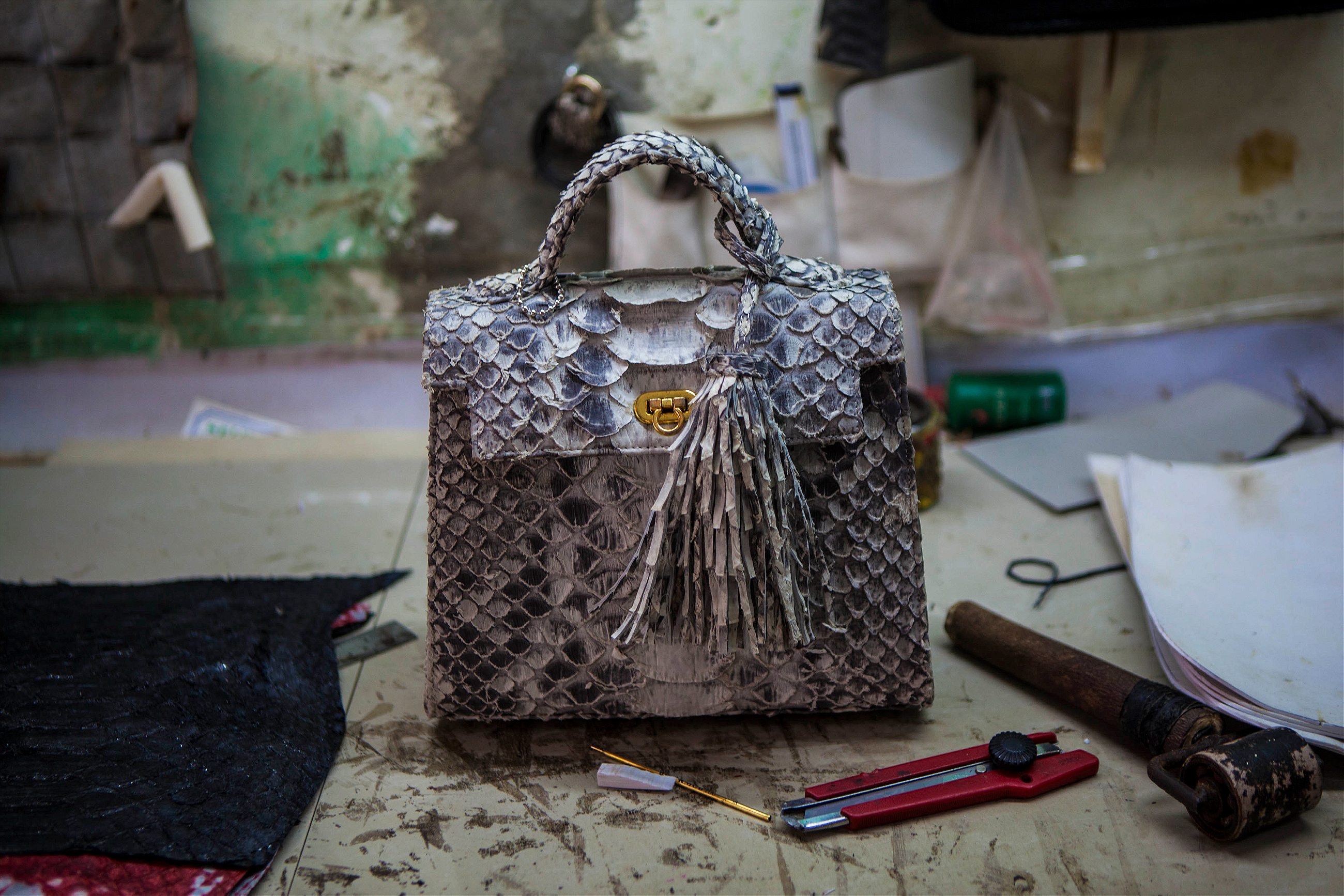In Indonesia, snake hunters feed a global industry.
The snakeskin purse is a classic fashion item, a common sight in luxury stores and on catwalks in the world’s fashion capitals. The demand for bags, boots, belts, and jackets made from the ornate snakeskin patterns remains strong.
But this coveted leather’s journey from snake-in the-wild to department store window is a long and often unpleasant one.
It starts with the snake-catcher. In the Indonesian village of Cirebon, West Java, for example, snake-catchers work through the night combing jungles, swamps, and gardens to track down their quarry. Thanks to their intricate skin patterns, one of the most coveted snakes for adorning accessories is the reticulated python—perhaps the world’s largest (or at least longest) snake.
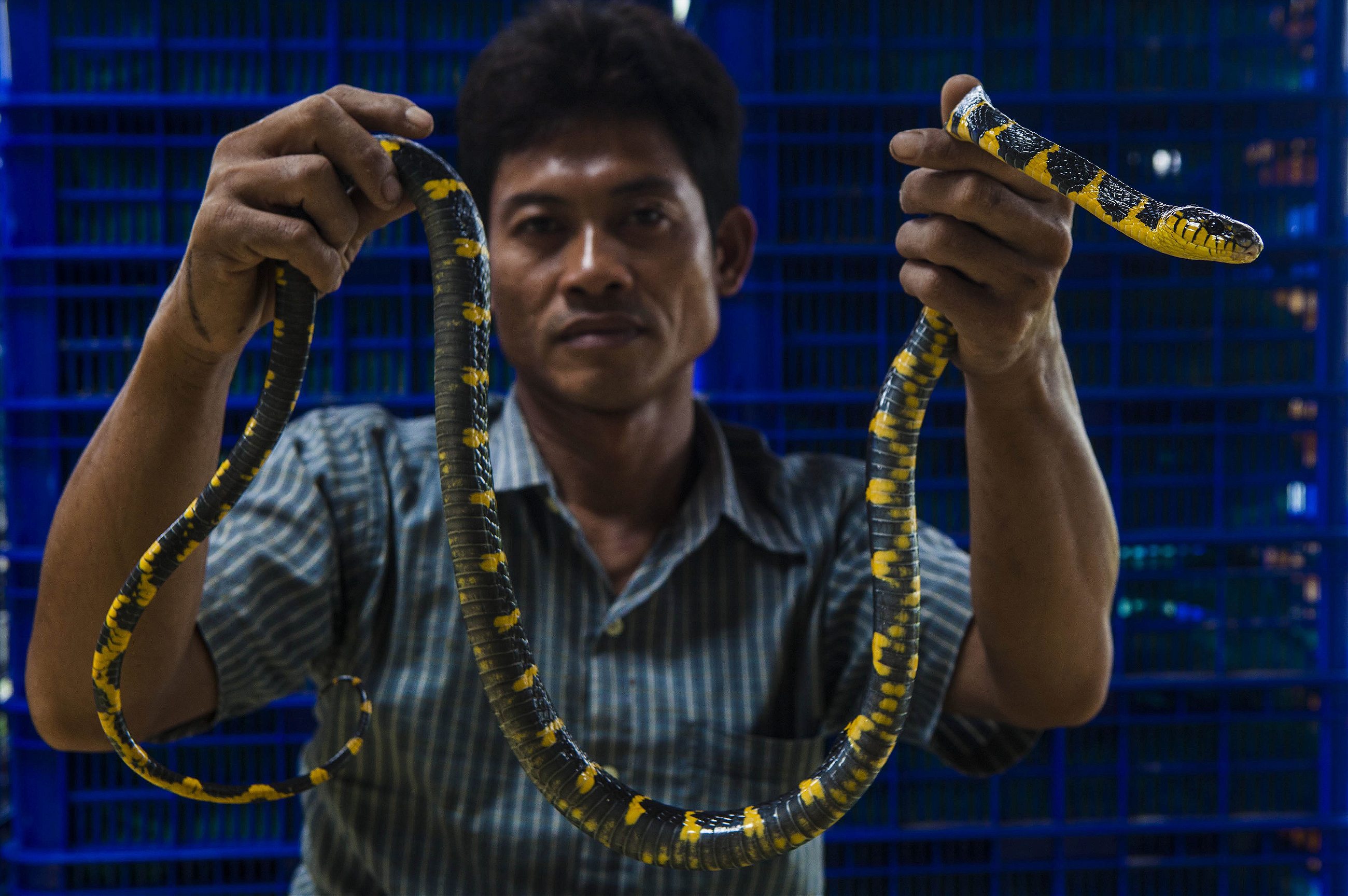
Many nations, including Vietnam and the Philippines, harvest snakes, but Indonesia is the biggest snakeskin exporter in the world. Italy is the largest snakeskin consumer in the world, and one of the largest manufacturers of snakeskin products; the United States accounts for about 50 percent of the Italian export market for the finished goods, followed by Japan at 25 percent. The remaining 15 percent goes to other European markets.
Indonesia’s snakeskin industry depends on its large network of snake-catchers. According to a 2011 report on snake trade and conservation by Indonesia’s Ministry of Forestry, about 196,000 people in Indonesia work in the snakeskin business, 170,000 of which are snake-catchers, varying from occasional, part-time hunters to full-time professionals. The rest are involved in processing the skin or in selling it.

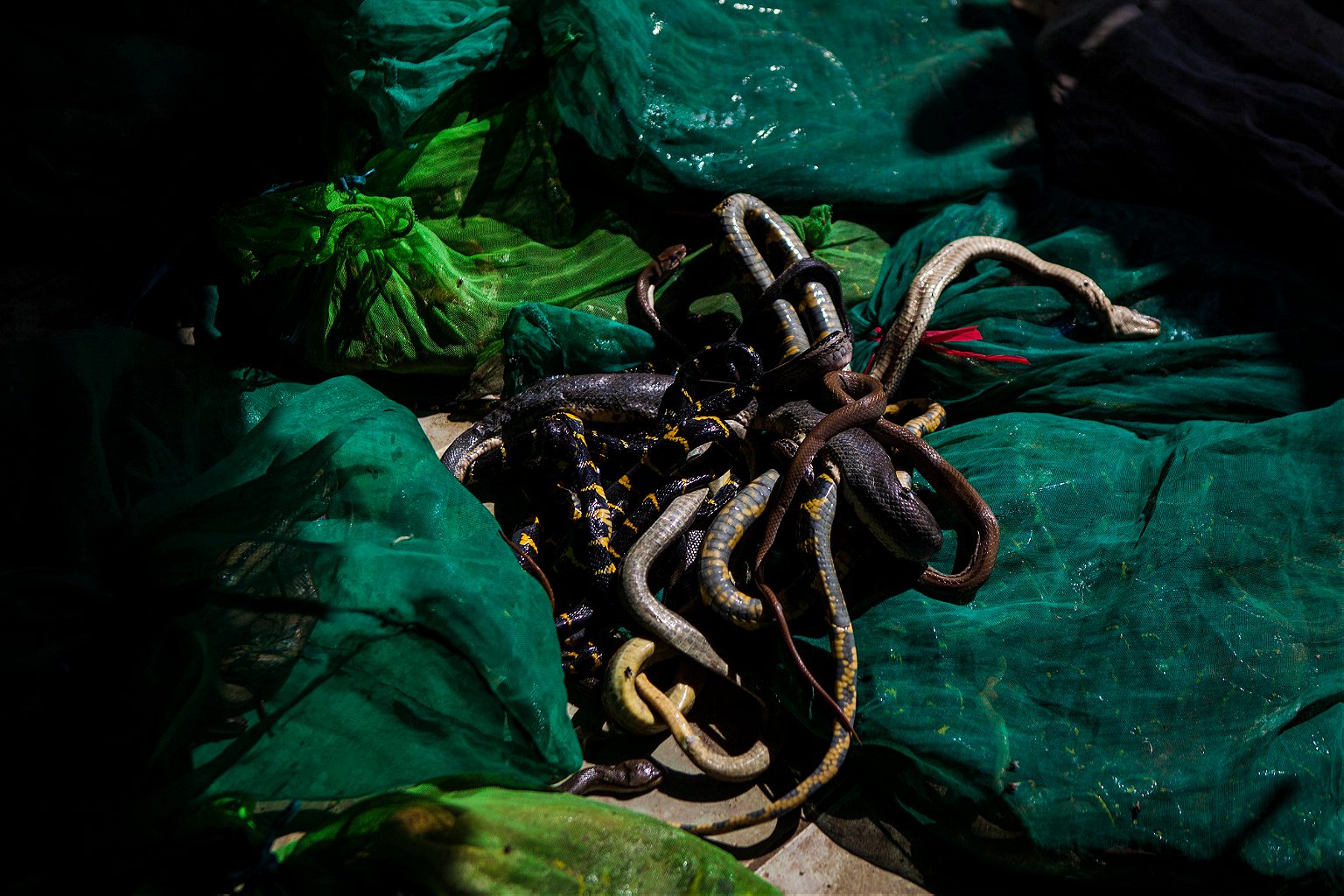
I spent three months documenting all stages of a snakeskin production chain, from snake-hunting in the wild to creating the finished product. I travelled to Cirebon, a five-hour drive from Jakarta. Once I got there, the snakeskin-processing plant wasn’t hard to find: everyone knew where it was.
I had to wait for a few days to see a python get caught and skinned, because they are not easy to catch. I followed one of the local snake-hunters through swamps in the rain. In five hours, he caught four small snakes, each only about a foot long.
Once caught, snakes are put in a sack, then brought to the slaughterhouse in Cirebon to begin the process of preparing the skin.

There are many ways to kill and skin a snake, but many of the most common methods are cruel, drawing concern from NGOs and animal-rights campaigners. Because shed skin is not thick enough to be converted into lucrative products, snakes give their lives for their skin. Larger snakes, such as pythons, are often struck on the head with a mallet. Then, their jaws are pried open and water is hosed into their bodies to swell them up, which makes it easier to peel the skin off.
Under pressure from animal rights campaigners over the use of exotic animal skins, fashion labels claim they use “farmed” skin, and work within trade and wildlife conventions to ensure sustainable and ethical sourcing and slaughtering. The demand for snakeskin items is so high that Kering, the luxury company that owns the fashion brands Gucci, Saint Laurent, and Alexander McQueen, is building its own python farm in Thailand to “raise” them in the best conditions.
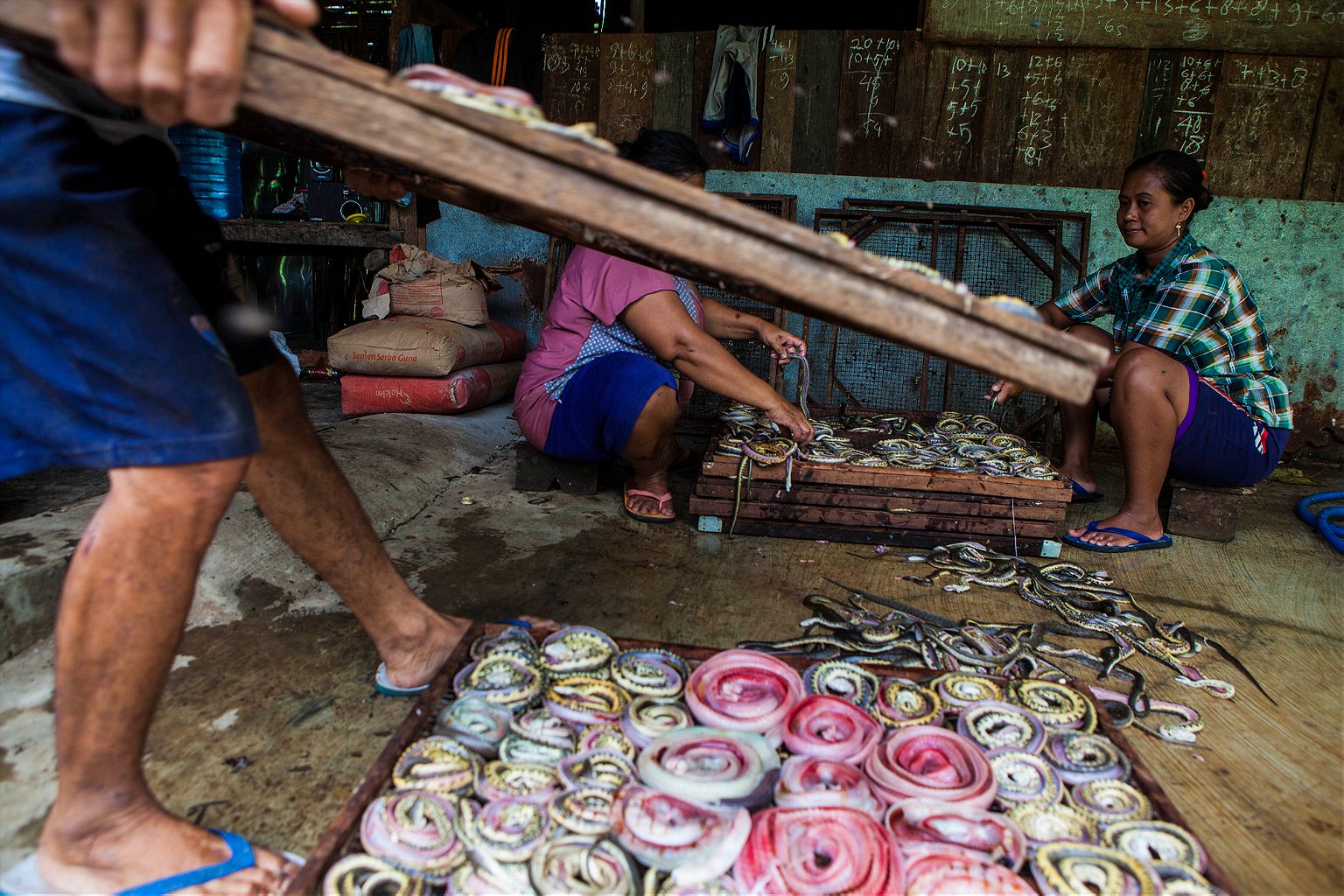
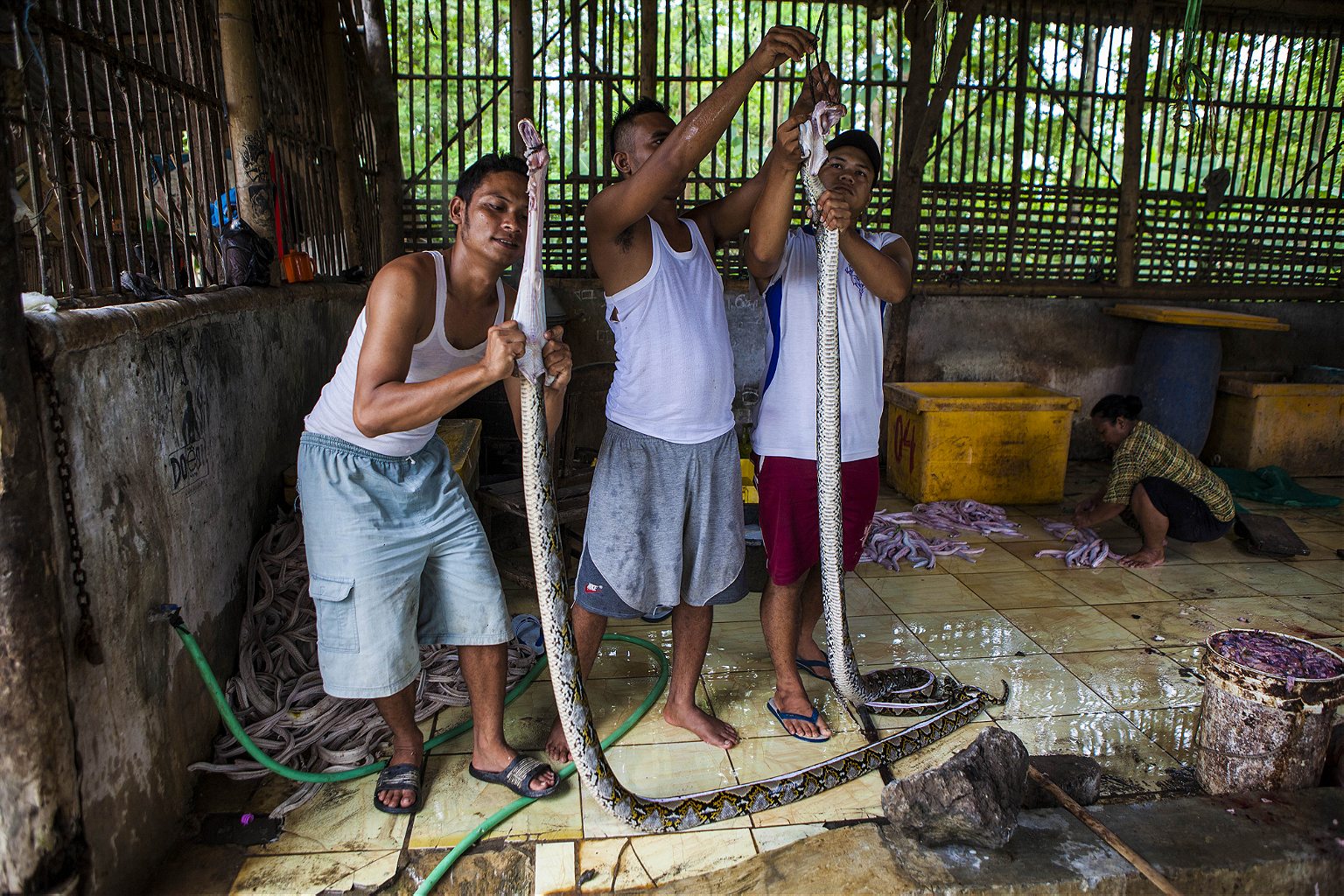
However, not all snakeskin products that reach store shelves can be traced. Many brands and stores don’t know where the python skin comes from, trade rules are easily exploited, and the illegal snakeskin trade is highly lucrative. There are also far fewer animal protection laws for reptiles, and it is endangering some species.
At a small snakeskin-processing factory in Bekasi, West Java, owner Ayu says that the factory makes sales through trade fairs in China, South Korea, Singapore, Malaysia, and Brunei. She says snakeskin bags from Indonesia are very much in demand from foreign buyers. With five employees, she can produce 50 bags and 30 wallets in one month.

Once the snakes have been peeled, the skins are rolled up and sorted into piles according to size. Then they’re cut with scissors into strips, and dried, sometimes in an oven. The snake meat is not wasted; it is thought to cure various ailments, such as asthma, and boost virility.
Once dried, sheets of snakeskins are dyed and processed into bags, wallets, belts and shoes—and then sent overseas, where they will often receive a dramatic price markup. In Indonesia, a snakeskin bag can cost 1.5 million-3 million Indonesian rupiah (USD $120-250), but can go for thousands of dollars in the United States.
